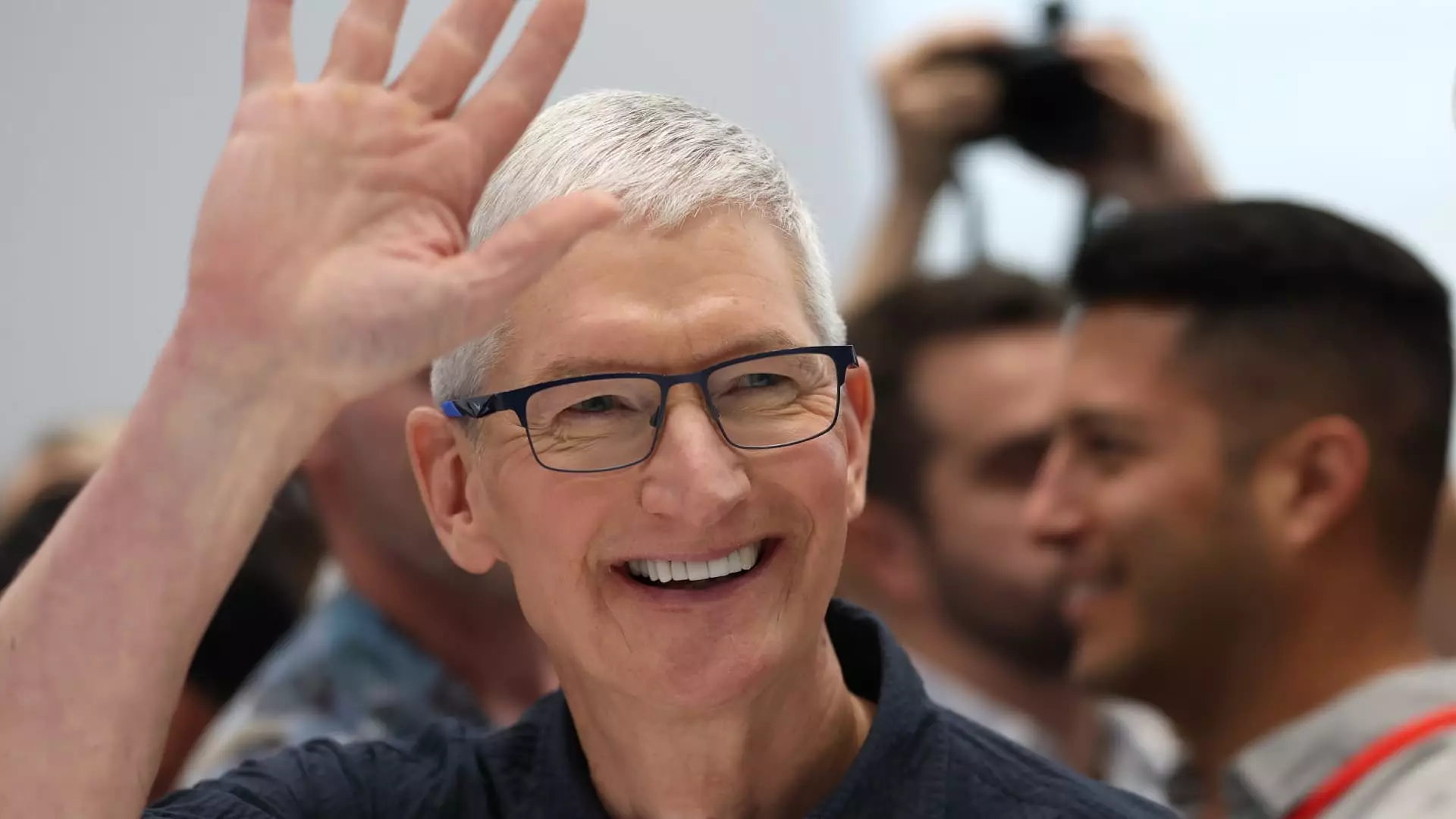In recent weeks, Apple Inc. has made headlines by achieving a historic high point in its share price, a noteworthy accomplishment amidst a backdrop of skepticism from financial analysts regarding the latest iPhone models. This resurgence not only brings attention to Apple’s iPhone sales but also prompts an evaluation of the company’s strategic positioning within the competitive smartphone market.
Strong iPhone Sales Fuel Stock Growth
As financial reports rolled in, they painted a picture of optimism for Apple. The International Data Corporation (IDC) released figures indicating a 3.5% increase in iPhone shipments year-over-year, reaching 56 million units in the third quarter. This figure exceeded Wall Street expectations, which had forecasted sales around 50 million units. Analysts at Morgan Stanley concluded that this margin could translate to an additional $2 billion to $4 billion in revenue for the quarter, an impressive boost that might quell some of the worries circulating in investment circles.
Apple’s ability to hold a steady market share of 17.7% in the global smartphone sector further buttresses its position, placing it as a formidable contender next to industry leader Samsung, which commands an 18.3% share. Analysts suggest that the solid performance of past iPhone models, notably the iPhone 15, can be traced to aggressive marketing strategies and promotional efforts surrounding the launch of their new suite of generative AI tools, branded as Apple Intelligence. This proactive approach seems to have paid dividends, casting a positive light on the company as the holiday season approaches.
Despite the cheers surrounding the iPhone sales figures, some analysts remain cautious about the forthcoming iPhone 16 models. Key firms, including JPMorgan and Bank of America, have expressed concerns about diminishing shipping times, which could suggest lower consumer demand for these AI-enabled devices. This skepticism serves as a reminder of the fragility of consumer technology markets, where trends can pivot rapidly based on consumer expectations and technological advancements.
Nonetheless, the anticipation surrounding Apple Intelligence is palpable. As Apple gears up for a rollout of this suite, expectations are set high that older models—including the iPhone 13 and iPhone 12—may see considerable upgrades as customers look to future-proof their devices. The potential for a robust upgrade cycle signifies a favorable outlook, but it also underscores the increasing pressure on Apple to sustain its innovative edge in a rapidly evolving digital landscape.
Market Dynamics: Apple vs. Competition
Apple’s upward trajectory has not gone unnoticed by market analysts, with firms like Evercore ISI maintaining their stance that Apple represents a tactical outperformer. They assert that merely meeting investor expectations for the upcoming earnings report could produce further gains for the stock. This sentiment highlights a broader understanding that Apple’s brand power and loyal customer base can often drive performance, even in times of uncertainty.
It’s important to consider the competitive landscape as well. While Apple remains a titan in the industry, it faces challenges from aggressive competitors like Nvidia, which recently reached a market cap of $3.4 trillion. However, Apple’s resilience suggests that it can sustain its crown as the most valuable publicly traded company for now, with its market capitalization pegged at $3.55 trillion.
The message from investment experts seems to favor a long-term approach to Apple stock. Jim Cramer, a prominent financial commentator, emphasized that positive data from IDC contradicts widespread skepticism and encourages investors to adopt a “own it, don’t trade it” mentality regarding Apple shares. This advice is premised on the belief that the momentum generated by AI advancements could yield solid returns over time, particularly as users gravitate toward newer devices.
In sum, while optimism surrounding Apple is validated by strong shipment data and potential revenue growth, deeper market dynamics and competitive pressures remain pivotal to its future. As investors weigh their options, they face a crucial decision: to remain committed to a staple of American technology or to explore opportunities that may emerge in a turbulent market. Regardless of the path chosen, the discourse around Apple reflects not just its immediate success but the ongoing evolution of technology and consumer behavior, making it a fascinating subject for analysts and investors alike.

